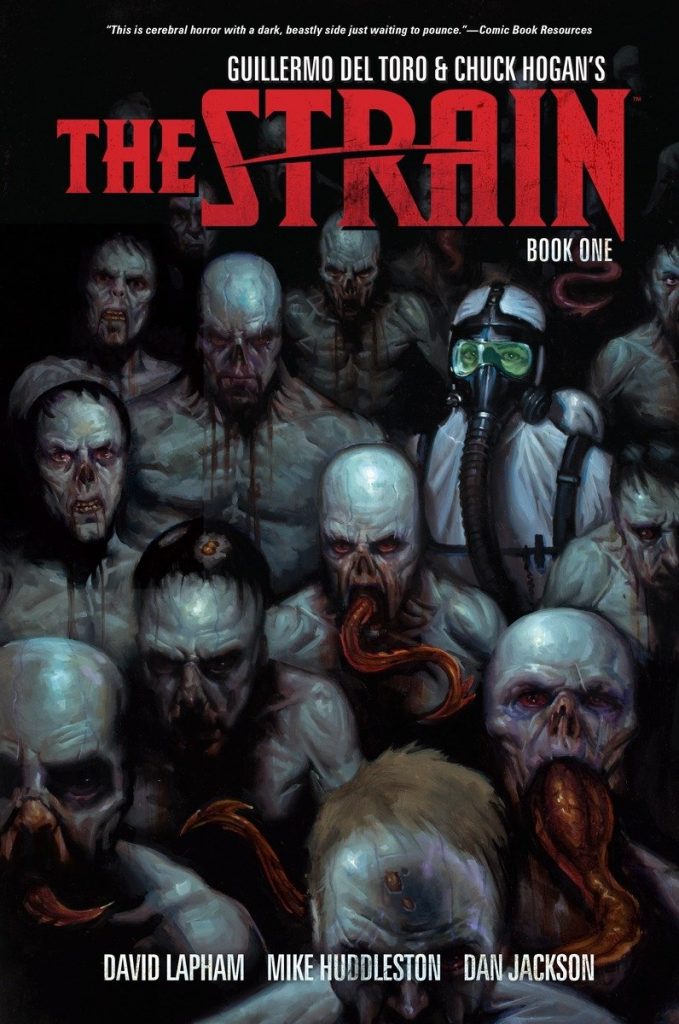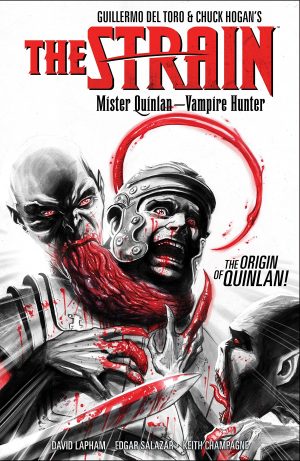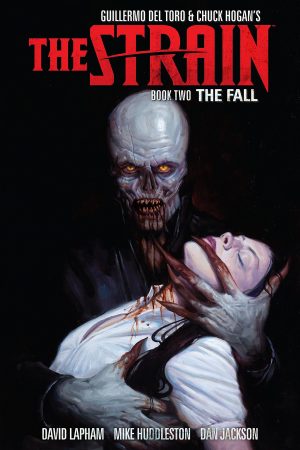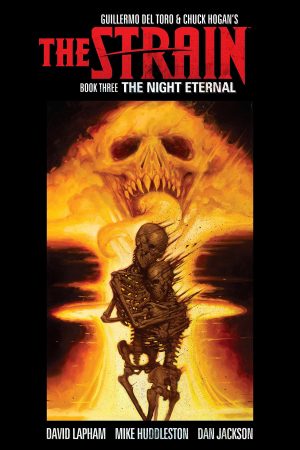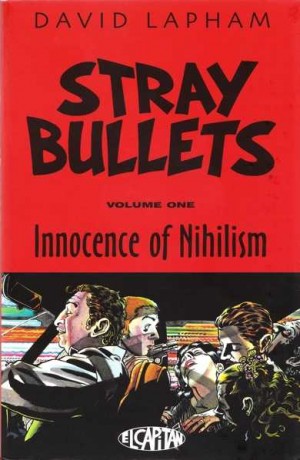Review by Frank Plowright
When a plane lands in New York with all passengers seemingly dead, renowned epidemiologist Ephraim Goodweather heads the investigation. A week later he’s a very different person with a very different perspective on both his life and career.
Film maker Guillermo Del Toro collaborated with crime novelist Chuck Hogan to write a trilogy of horror novels called The Strain, and it’s these that David Lapham and Mike Huddleston adapt as comics, which appeared before the TV show also based on the novels. Every writer involved has a good track record with action drama, and Lapham’s choice of what to pull from the books and how to pace that results in a gloriously accelerating ride. A prelude of an old woman in Romania warning her grandson of supernatural dangers sets the tone, after which a normal beginning introduces some important cast members before the terror begins. After that there’s a pattern of the horrific moments first intruding occasionally, then at a greater pace until they predominate and the quiet times are few. Lapham also starts well by signalling to readers what’s going while the main cast never seem to have heard of vampires in their ‘real’ world.
The big threat is the Master, the wild card among seven ancient vampires who’ve existed for thousands of years and have carved out territories between them. The Master is no longer content to skulk in the shadows, and with the financial help of callous billionaire Eldritch Palmer he has set up a grand plan now playing out. The Master has been hunted for decades, and occasional interludes dip into Abraham Setrakian’s past. A strong emotional pull is provided by Goodweather’s love for his son, now living with his ex-wife and her new partner, while he’s found some romantic solace with fellow epidemiological researcher Nina Martinez. The primary cast is rounded out by giant rat catcher Vasily Fet, and gangster Guz Elisade, whose purpose isn’t revealed during this story.
Huddleston’s art defines the gloom, effectively using areas of black ink for shadow, and drawing almost sketchy figures within that. His panels are akin to hastily snapped photographs that show what’s going on without always defining people or action. It’s very atmospheric. And because the Master and the horrors he creates aren’t the traditional fanged vampires Huddleston’s designs are critical, and he certainly delivers.
Emotional ties set up over the first few chapters are ruthlessly exploited for tension as the story rockets to a finish. For all the use of variations on familiar scenes from horror action thrillers, The Strain also frequently surprises, resulting in a compulsive page turner, and don’t count on the sentimentality of the writers becoming too attached to their cast.
As an alternative to this pricier hardcover edition, curious readers can start with the paperbacks The Strain Volume 1 and Volume 2, but you’re likely to be hooked either way. The series continues with the adaptation of the second novel The Strain Book Two: The Fall.
